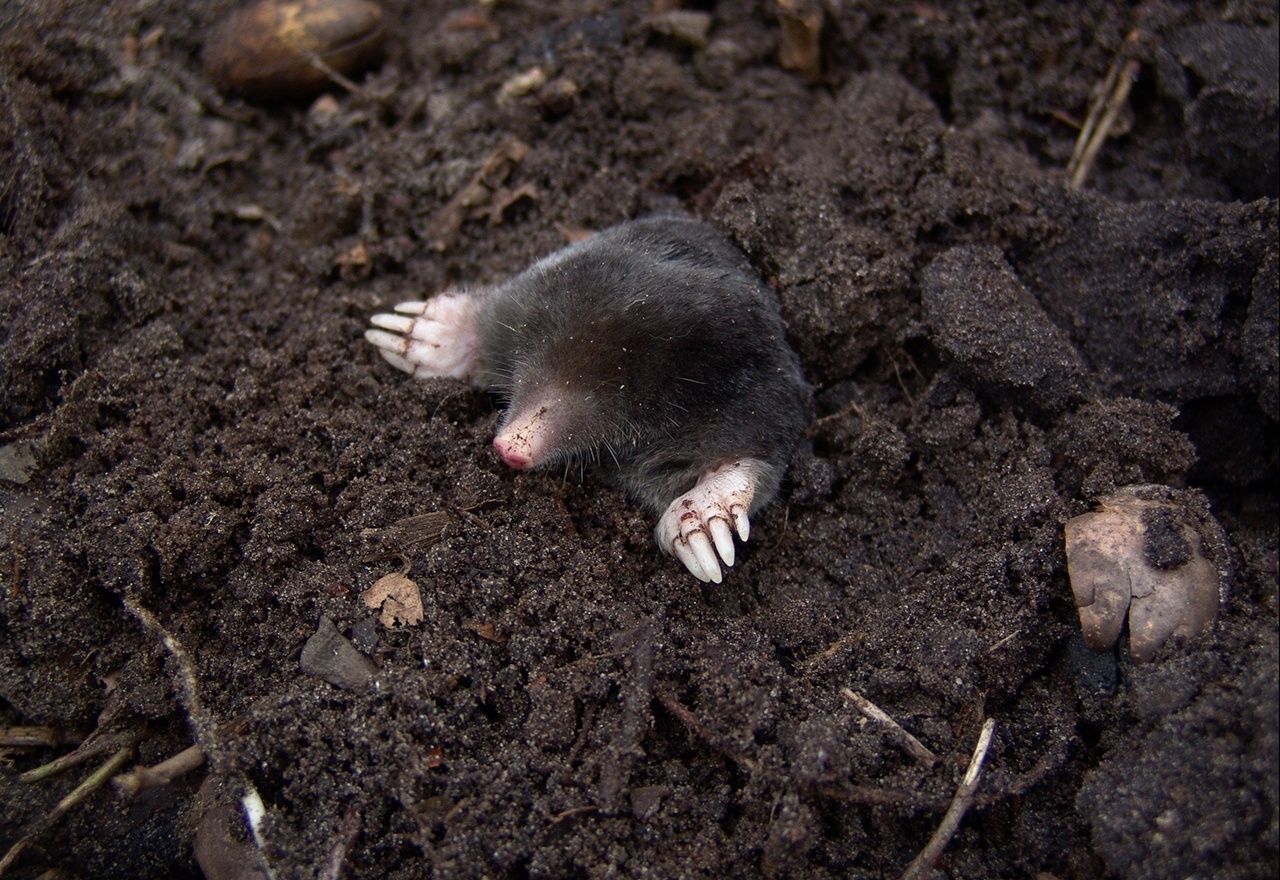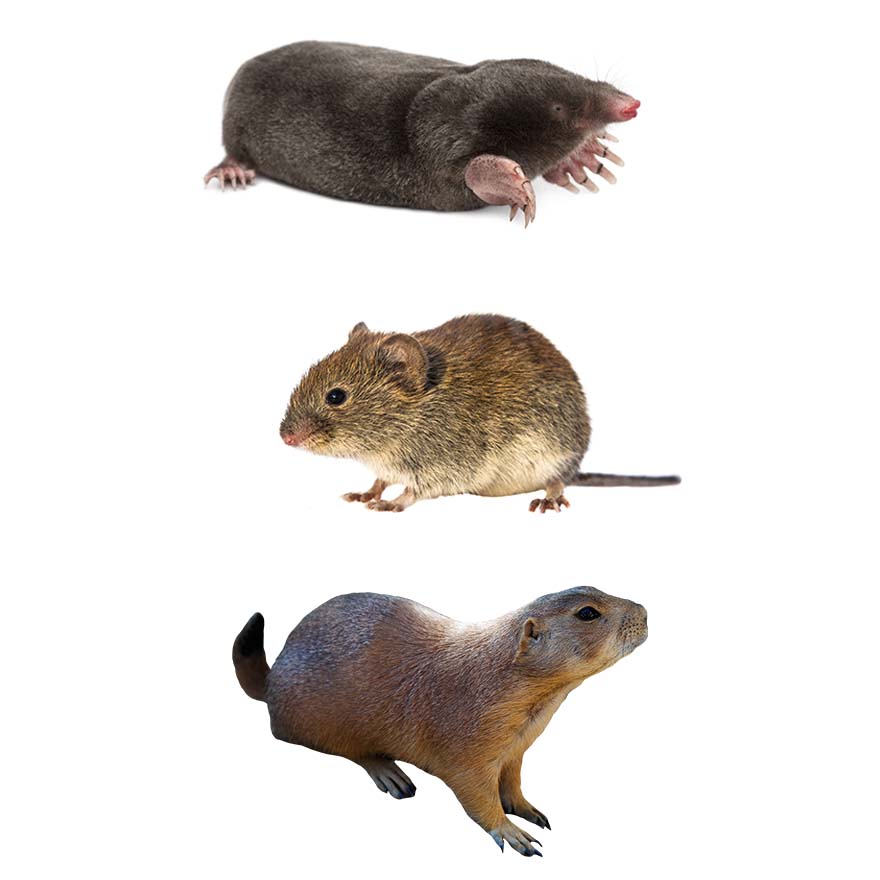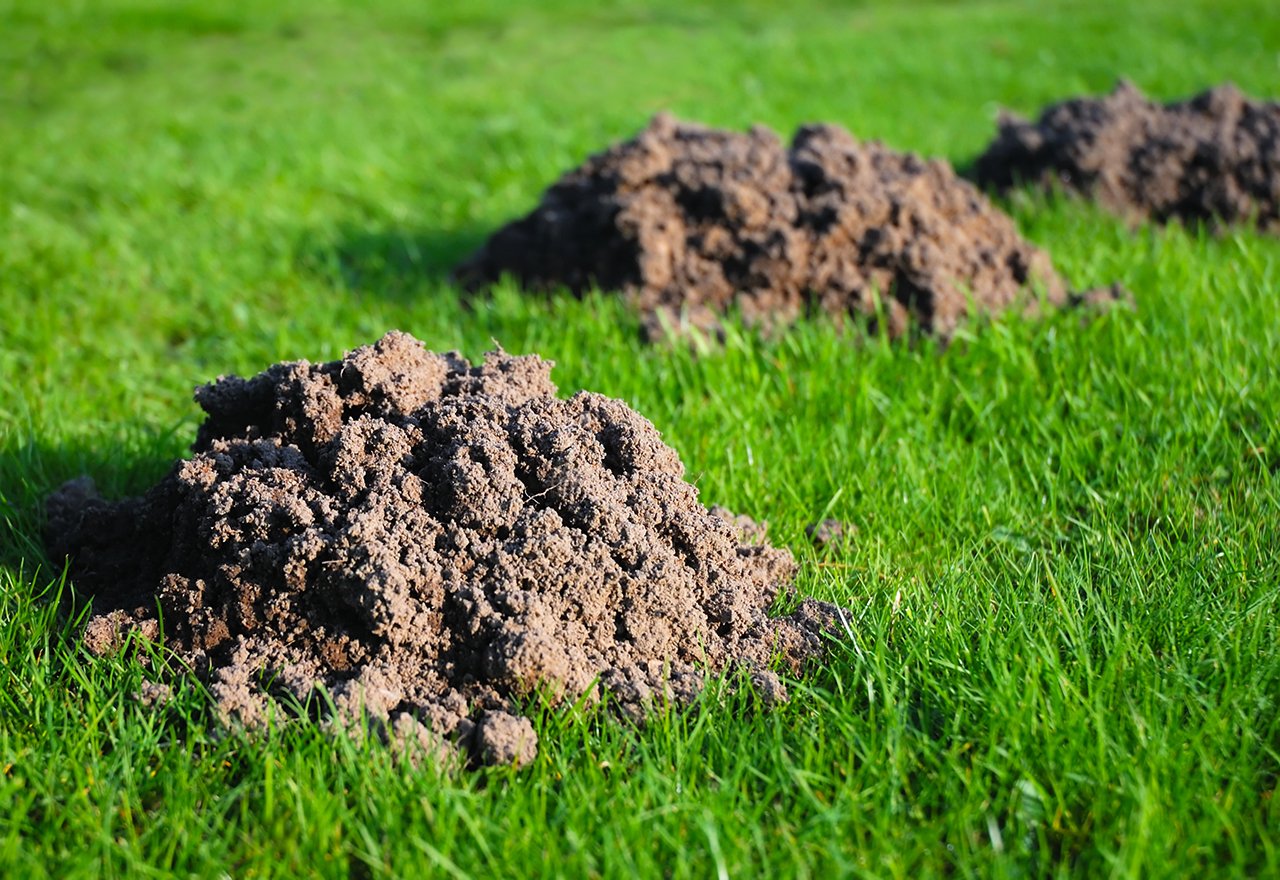Moles Love Soft, Wet Ground and Feed on Grubs and Earthworms in the Soil

Moles are small rodents that dig tunnels underground. They’re smaller than you think, only six to eight inches long, which is about the size of a chipmunk. There are only six mole species in the United States and only three that hang out in lawns in the Midwest: the Eastern Mole (Scalopus aquaticus), Hairy-Tailed Mole (Parascalops breweri), and Star-Nosed Mole (Condylura cristata). The Eastern Mole is most common in our Midwest region and is sometimes called a Common Mole. Common Moles have large, paddle or shovel-like front feet that are hairless and well adapted for digging. Their movement underground is more like swimming than walking and they can dig as fast as a foot a minute. They are brown to grey and have very small eyes and short, thick tails. All Moles primarily eat insects and worms: their major food source is earthworms and they love grubs (although removing grubs for your lawn does not mean you get rid of Moles!). And they eat a lot - up to 70 to 100 percent of their body weight a day! Moles usually live alone, but their tunnels might connect with those of neighboring moles. They mate in late Winter, reproducing annually and have two to six young who are born in the Spring.
Moles love moist, shaded soil. If your soil is always over-watered, that might be part of the problem. They also move around a lot. Moles do not make permanent homes and often move from place to place, staying in a yard for just a few weeks, sometimes. Your lawn might just be the next on their route and they will move on soon.
There are so many home remedies to get rid of Moles that simply don’t work, including chewing gum, poison peanuts, and smoke cartridges. These rarely work because they are not targeting what Moles eat or their behaviors. Our recommendation is to first use our Mole Chase Natural Mole Repellent as often as necessary to chase the Moles out of your yard. A single six-pound bag can cover up to 6,000 square feet, so it goes a long way. Also, you don't need a commercial spreader to scatter it across your lawn. Your plastic broadcast spreader should do the trick. We also offer Mole Max, and Nature's Defense Organic Animal Repellent, which work to repel nuisance animals. Using Beneficial Nematodes Natural Grub Killer, to naturally discourage grubs may also help (but remember, they eat a lot of other things too!). If you're in our service area, Good Nature Organic Lawn Care is happy to do these applications for you.
The most permanent and highly recommended method of removal is trapping and killing or trapping and moving Moles from your lawn. We have a trap in our online store that we recommend.
We always recommend watering infrequently, only once a week at the most. This will ensure that your soil is not moist which is what Moles prefer. If you want to make sure Moles do not tunnel around a specific plant, The Farmer’s Almanac recommends that you dig a 2–3 foot hole and line the sides and bottom of the hole with wire mesh. Fill the hole with soil and plant. We do not recommend doing this for trees, as the wire mesh will constrict and kill off roots as they get larger. It is probably ok for smaller shrubs.
People often mix up these three varieties of small, tunneling mammals. Gophers eat vegetation and cause direct damage to landscaping while Moles eat insects. They also have very large teeth and front claws, whereas Moles do not. Voles do not have the same paddle front feet as Moles, and look a lot like mice with small ears and shorter tails. Moles have hairy, stubby tails. Voles often take over mole tunnels. They do not have the digging capabilities of Moles and so tunnels that they make on their own are much more shallow. Also, Voles eat vegetation and do not feed on insects, grubs, or earthworms. The image below shows the physical difference between a Mole, Vole and a Gopher.

